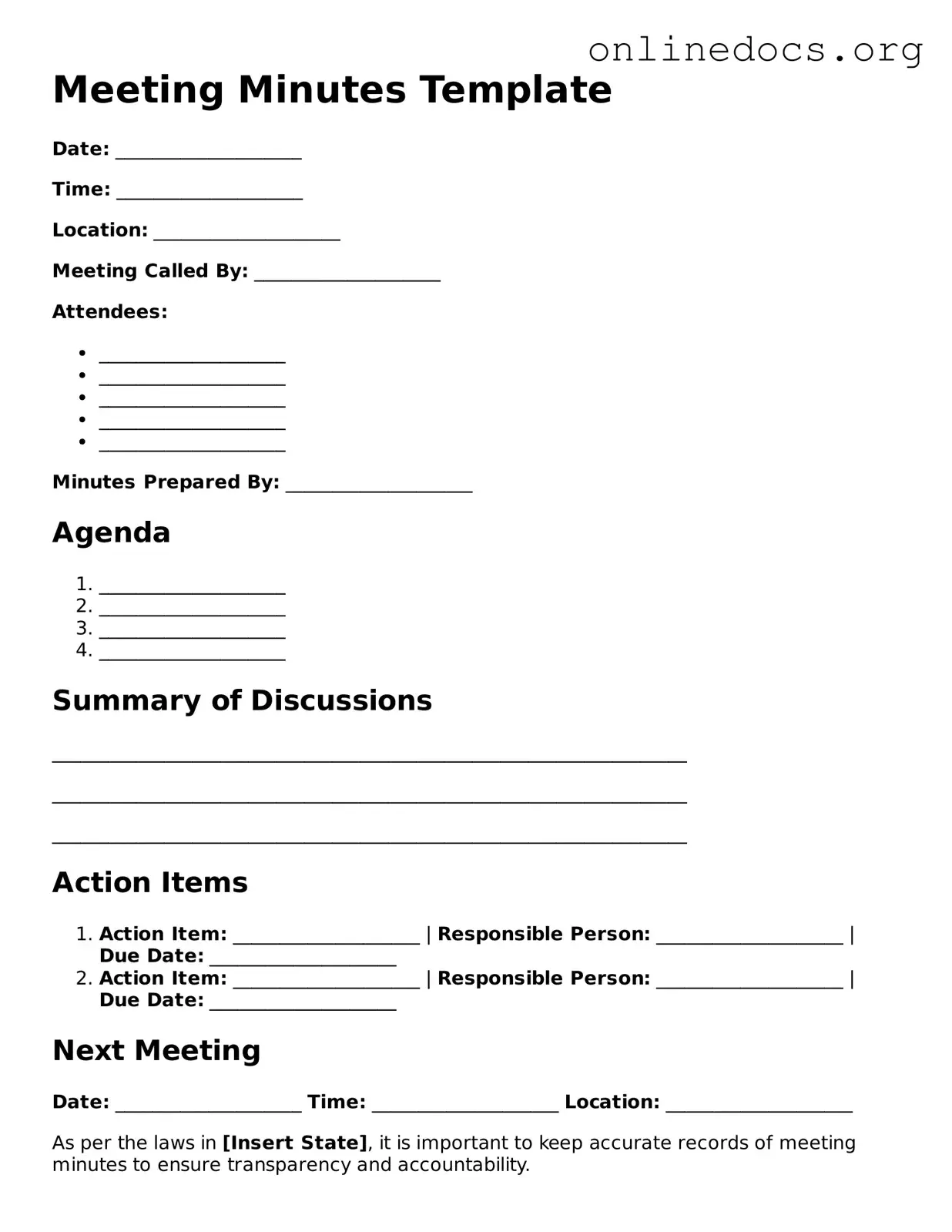The Agenda is a document that outlines the topics to be discussed during a meeting. Similar to Meeting Minutes, it serves as a formal record, but focuses on the planned discussions rather than what actually occurred. The Agenda provides participants with a roadmap, ensuring that all necessary subjects are addressed. Both documents are essential for effective communication and organization within a team or organization.
Action Items are closely related to Meeting Minutes as they detail specific tasks assigned to individuals during a meeting. While Meeting Minutes capture a summary of discussions, Action Items highlight the responsibilities and deadlines that arise from those discussions. This document ensures accountability and follow-through, complementing the record of the meeting by providing clarity on what needs to be accomplished afterward.
Meeting Summaries share similarities with Meeting Minutes in that they provide an overview of the meeting's key points. However, Meeting Summaries are often more concise and may not include detailed discussions or decisions made. They serve as a quick reference for participants who need to recall the main takeaways without delving into the specifics of the Minutes.
Attendance Records are another document that parallels Meeting Minutes. They track who was present at a meeting and can be included within the Minutes themselves. This record is important for accountability and helps establish the context of discussions. Both documents work together to provide a complete picture of who participated and what was discussed.
Reports are similar to Meeting Minutes in that they provide detailed information about specific topics, often following a meeting. Reports may summarize findings, analyses, or recommendations discussed during the meeting. While Meeting Minutes focus on the meeting's dialogue and decisions, reports can delve deeper into the implications of those discussions, providing a broader context.
Proposals can also resemble Meeting Minutes, especially when they document discussions around potential projects or initiatives. While Meeting Minutes capture what was said, proposals outline the suggested course of action based on those discussions. Both documents aim to facilitate decision-making, with Meeting Minutes providing the background and proposals presenting the forward-looking plan.
In addition to these documents, it's important to have a mechanism for legally formalizing personal transactions, such as the General Bill of Sale, which can be obtained from UsaLawDocs.com. This document not only outlines the details of the transfer but also serves to protect both parties involved in a sale, ensuring that all essential information is clearly recorded.
Follow-Up Emails are often sent after a meeting and can resemble Meeting Minutes in their content. These emails typically summarize the meeting's discussions, decisions, and next steps. While they may not serve as an official record, they reinforce the information captured in the Minutes and ensure that all participants are aligned on what was discussed and agreed upon.
